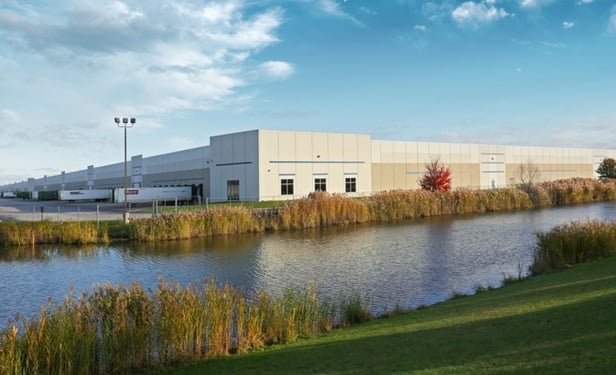CHICAGO—In 2015, the Chicago industrial market had over 10 million square feet of space positively absorbed, with nearly four million square feet in the fourth quarter alone, Transwestern reports in its latest outlook report. The industrial leasing market has now had 18 straight quarters of positive absorption, but the last quarter marked the highest activity since the end of 2013. And with Illinois manufacturing at an all-time low, it is the growth of e-commerce that is providing the fuel.
"Chicago is now the distriburtion center of the country," Sandy McDonald, director of market research for Transwestern's Chicago and Midwest regions, tells GlobeSt.com. No metro area can match the region's concentration of railroads, highways and airports, and as customer demand for home delivery grows, corporations should keep expanding here. "Nobody wants to wait five days for a package anymore; they want it now, so everybody needs to be in the middle of the country, and that means everybody needs to be in Chicago."
And the money for new construction is available. "Investors now have a great deal of confidence in this sector," McDonald adds. "They look at Chicago industrial property as a safe bet, even more than office," due to the higher rate of vacancy in that sector. The overall industrial market ended the year with a 6.9% vacancy rate, a record low since the recession and a drop of 30 bps from the third quarter. Industrial real estate sales prices were on average $66.19 per square foot in the fourth quarter, compared to $53.26 last year. In 2015, the Chicago area had more than $3.28 billion of industrial sales, and about 44% of the buyers were sources from foreign capital.
Developers had 37 industrial/flex properties under construction in the fourth quarter, according to Transwestern. When completed, the builders will have added more than 10.1 million square feet to the Chicago area's industrial inventory. Significantly, tenants have already preleased 51.2% of this space. A few years ago, speculative developers concentrated on small- to medium-sized buildings, perhaps 200,000 square feet or less. But today, with so much of the tenant activity coming from large users such as Amazon, Peapod, and other major logistics and fulfillment firms, McDonald says developers such as Prologis now feel comfortable launching projects with up to one million square feet. "And before they open the doors they are 100% leased."
The biggest lease of the fourth quarter was by OHL, one of the nation's top 3PL providers, for the entire 672,080 square foot building at 790 Taylor St. in suburban Romeoville. Pizzuti built the I-55 facility on a speculative basis, and it was the largest vacancy to enter the market during the fourth quarter of 2014, according to Colliers International.
The industrial market saw just a slight increase in overall rents during 2015, and ended the year averaging $5.40 per square foot, up from $5.30 last year. But in the O'Hare submarket, which is becoming even more important to the distribution sector, rental rates increased over $1.00 to $7.58. And in the coming year, Transwestern expects that overall rental rates will rise in the region since the increased pace of speculative development will not match the growing demand. "If I were an investor," McDonald says, "industrial is where I would go."
© 2024 ALM Global, LLC, All Rights Reserved. Request academic re-use from www.copyright.com. All other uses, submit a request to [email protected]. For more information visit Asset & Logo Licensing.








